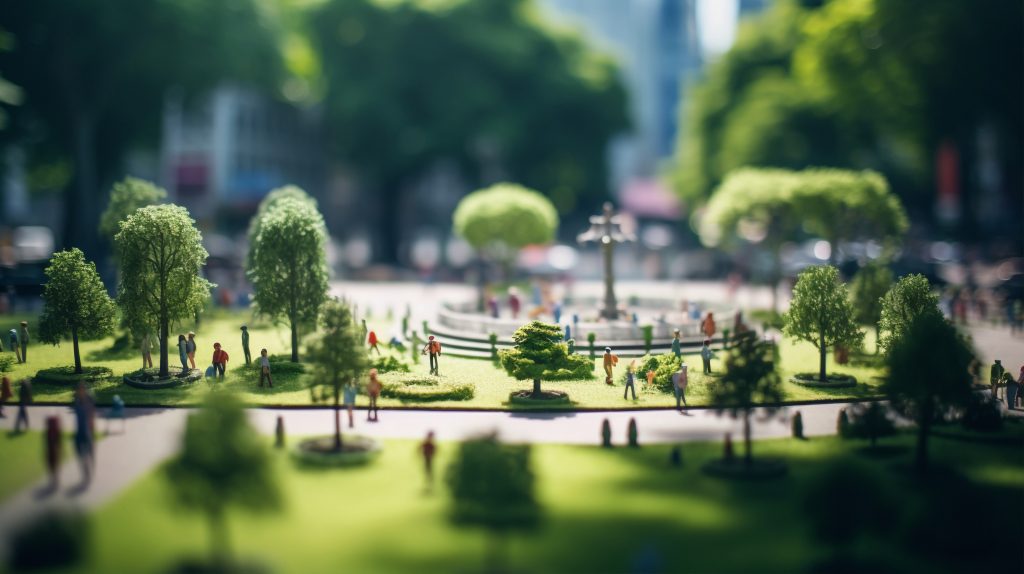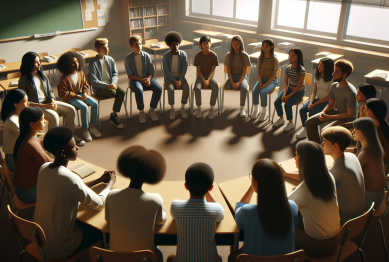Public spaces—parks, sidewalks, plazas, schoolyards, transit stops—do more than serve daily functions. They act as tangible expressions of community values and priorities. In 2025, how public spaces reflect societal priorities matters more than ever. These environments now highlight attitudes toward education, equity, climate resilience, and social cohesion. For communities and city planners alike, understanding this connection helps shape urban landscapes where people feel seen, safe, and supported.
Let’s explore how the design and evolution of public space in cities across the globe mirror the values we hold dear today.

1. Turning Everyday Spaces into Learning Hubs
Cities increasingly incorporate learning elements into public space design. After all, not all educational experiences happen in a classroom. These “informal learning spaces” make education accessible and ingrained in daily life.
a) Outdoor Classrooms
Several cities now allow outdoor teaching in public parks. Educators in Portland and Chicago report better student engagement and lower stress when classes move outdoors. This strategy addresses pressing concerns over mental health in schools, while also connecting children with nature (Edutopia).
b) STEM-Focused Playgrounds
In Philadelphia, Playful Learning Landscapes has partnered with Brookings to install STEM-focused play installations. These include interactive puzzles, measuring games, and science-rich murals. A recent Brookings study found that these playgrounds generate 40–50% more STEM-based conversations among kids and their caregivers compared to standard play zones (Brookings).
c) Mobile Libraries and Literacy Hubs
In Toronto, public library systems park buses or vans in under-served neighborhoods. These mobile units offer books, digital tools, and community programming directly to families who lack regular library access. By bringing resources into neighborhoods, they respond to literacy gaps and support lifelong learning.
These initiatives demonstrate that education isn’t confined to classrooms. Instead, it becomes a permanent fixture in the public spaces we frequent.
2. Prioritizing Safety, Access, and Equity
Public space design has shifted from generic features to inclusive ones. Modern amenities now target safety, access, and equitable representation—especially for youth.
a) Safe Routes to School
Programs like “Safe Routes to School” improve sidewalks, add crosswalks, and introduce traffic calming around schools. In cites like Seattle and Austin, these efforts have led to a 25–30% decrease in pedestrian injuries among students over the past five years. Parents feel more comfortable letting children walk or bike to school.
b) Accessible Playgrounds
Playgrounds now include equipment for children with physical, sensory, and cognitive disabilities. These spaces feature ramps, tactile elements, sensory gardens, and quiet zones. Designers collaborate with families and occupational therapists to ensure inclusivity. As a result, children of all abilities can play side by side.
c) Cultural Representation
Public spaces within multicultural cities now honor diverse backgrounds. Murals, heritage gardens, storytelling benches, and public art pieces created by local artists celebrate indigenous traditions and immigrant stories. These features inform passersby about community histories and help make marginalized residents feel valued.
By embedding access, representation, and safety into design, cities signal that all community members matter—and belong.
3. Designing for Climate and Resilience
With global warming and extreme weather events intensifying, public space design now incorporates climate resilience features. These enhancements protect infrastructure and public health.
a) Stormwater Management and Green Infrastructure
Cities like Houston, Minneapolis, and Baton Rouge are converting standard parks into “stormwater parks.” These integrate flood detention basins, rain gardens, permeable pathways, and native plantings. The added benefit? These parks double as open recreational space during dry weather. Communities gain multiple benefits: public amenities and flood protection.
b) Cooling Corridors to Combat Urban Heat
Many cities—such as Phoenix and Miami—are building “cooling corridors.” These include tree canopies, reflective paving, abundant shade, and hydration stations. As a result, summer heat-related illness drops and outdoor activity becomes safer for children, elderly residents, and everyone in between.
c) Edible Landscapes and Community Gardens
In Detroit and Copenhagen, public gardens act as food sources, educational centers, and mental-health boosters. Residents learn sustainable practices, garden together, and enjoy fresh, affordable produce. These spaces also support local wildlife and improve biodiversity.
By designing green, resilient public environments, cities not only manage climate risks but also demonstrate that clean air and access to nature are shared public goods.
4. Reviving Third Places for Social Connection
After increased isolation following the pandemic, “third places”—public venues that foster community interaction—have become essential for social connection and mental well-being.
a) Library Courtyards & Outdoor Events
Public libraries have expanded beyond indoor spaces. Installed in public plazas, they now host pop-up cafés, outdoor reading nooks, civic forums, film nights, and community-led workshops. These venues encourage multi-generational interaction and reinforce libraries as civic hubs.
b) Parklets and Placemaking
Cities like San Francisco, Barcelona, and Melbourne have “parklet” projects—mini parks built in parking spaces or street edges. These parklets feature seating, greenery, bike parking, and interactive elements, turning transit areas into inviting hubs for neighbors to meet.
c) Shared Work and Learning Spaces
Open-air co-working spaces and “learning cafés” near universities allow students, freelancers, and families to use public space for work, study, and collaboration. Equipped with Wi-Fi, shade, and flexible seating, they make remote work more communal and accessible.
In these “third places,” design focuses on connection, rest, and shared experience—not merely utility.
5. Democratizing Design Through Participation
Public planning no longer happens behind closed doors. Today, cities empower residents to shape public spaces through democratic programs.
a) Participatory Budgeting
In New York, residents aged 11 and older take part in budgeting decisions related to public space upgrades. Each year, they choose how to allocate millions of dollars for street improvements, park renovations, and community-led installations (NYC.gov). This process strengthens civic literacy and empowers marginalized groups.
b) Student Advisory Councils
In several school districts, high school students sit on public planning boards. They advocate for teen-friendly amenities such as open Wi-Fi zones, performance stages, skate spaces, or quiet study corners—ensuring teenager voices inform infrastructure decisions.
c) Digital Engagement Tools
Many cities now host digital town halls, interactive mapping platforms, and surveys that solicit input on public space development. These online tools broaden civic participation—especially for people who cannot attend in-person meetings due to work, disability, or caregiving responsibilities.
Participatory design fosters transparency and shows that public space is a shared responsibility—and a collective resource.
6. Crafting Spaces That Encourage Belonging
Increasingly, urban designers are not just addressing accessibility—they aim to make people feel genuinely welcome, respected, and represented in public spaces.
a) Multilingual & Inclusive Signage
Cities such as Toronto and San Francisco post directions, placards, and public notices in multiple languages. This not only supports non-native speakers—it signals that diverse cultures are recognized as integral to civic life.
b) Cultural Programming and Events
Local governments collaborate with community groups to hold cultural festivals, film screenings, holiday celebrations, and open-air concerts. These events happen in upgraded plazas, libraries, and schoolyards. They serve both celebration and integration, bridging diverse backgrounds.
c) Open Community Zones
Designers are creating spaces that support different types of usage: quiet reflection areas, protest zones, playgrounds, and yoga mats. This mix of passive and active zones ensures that people can gather in ways meaningful to them—whether they want to assert opinions, socialize, or meditate.
By building belonging as a design principle, cities craft public spaces where barriers are removed—and community is felt.
7. Measuring Impact: What Success Looks Like
To justify these investments, cities use metrics that connect public space improvements with social outcomes. This data-driven approach highlights the value of prioritizing people over pure aesthetics.
a) Walkability and Pedestrian Use
Cities track foot traffic and walking rates before and after sidewalk improvements or Safe Route upgrades. In areas of Seattle with protected crosswalk projects, pedestrian numbers increased by 18% within two years.
b) STEM Engagement and Youth Learning
Philadelphia collected data showing a 42% rise in family-led STEM discussions at playful learning sites compared to traditional parks.
c) Heat Reduction and Public Health
Miami reported a 22% drop in heat-related health incidents in neighborhoods with cooling corridors. Meanwhile, park-based health surveys showed increased reported feelings of comfort and safety among elderly respondents.
These evidence-based insights demonstrate that public spaces designed around societal priorities yield measurable improvements in health, education, safety, and civic connection.
Conclusion
Public spaces matter—and they tell a story. By examining how communities design parks, plazas, schoolyards, and transit zones, we can see what we truly care about: inclusion, education, resilience, and connection. As urban planners, civic leaders, and everyday users, our choices shape these spaces—and the future they represent.
In 2025, how public spaces reflect societal priorities reveals our determination to build communities where everyone has room to learn, heal, gather, and grow. With strategy, participation, and evidence-based design, public space becomes more than shared land—it becomes shared vision.
References
-
Edutopia – Outdoor Classrooms Improve Learning and Well-being – https://www.edutopia.org
-
National Center for Safe Routes to School https://www.saferoutesinfo.org
-
Participatory Budgeting Project – PB NYC https://www.participatorybudgeting.org









